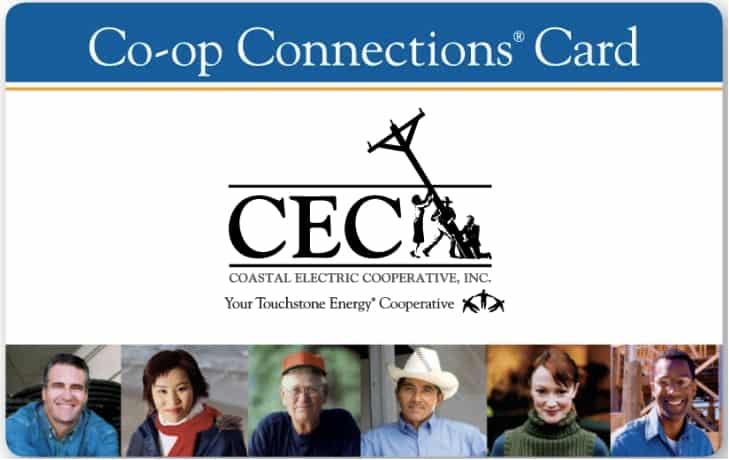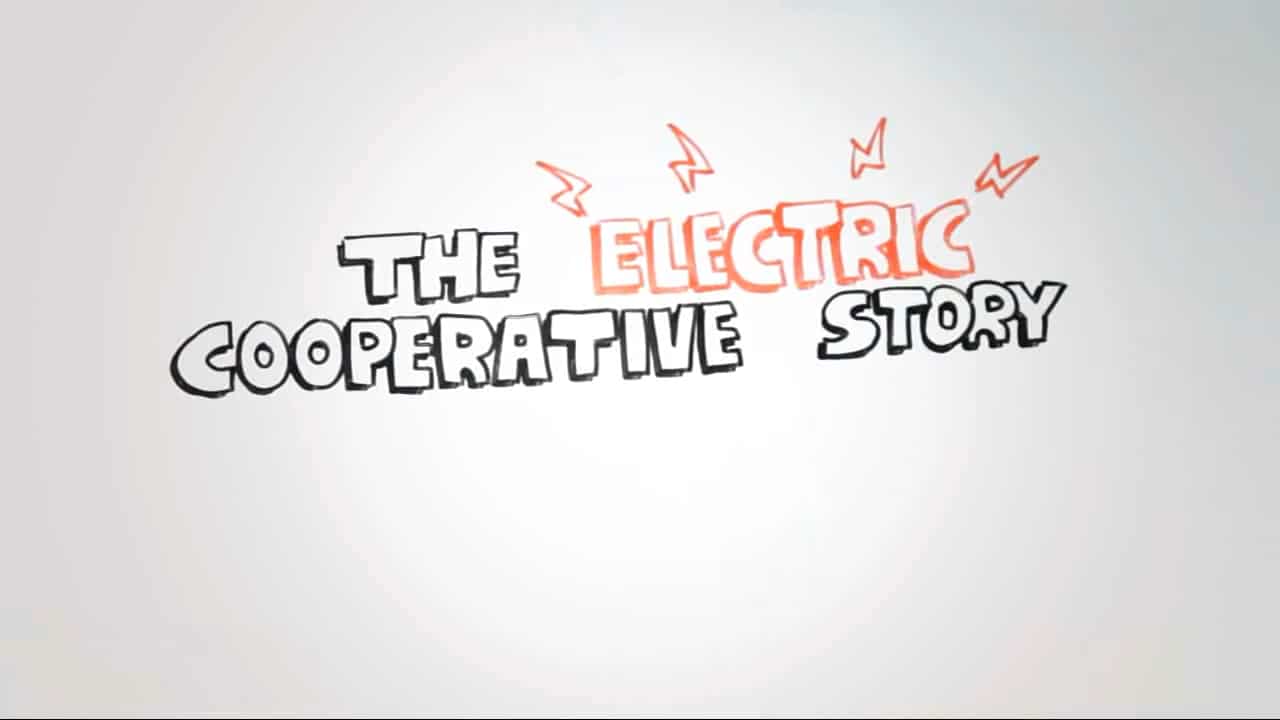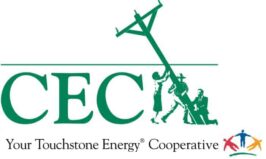About Us

Experience savings on restaurants, golf, shopping, travel, family fun, automotive, movies, insurance… everything you can imagine is here. Co-op Connections has the best deals all in one place.
How Your Electric Cooperative Works
What is an Electric Cooperative?
Coastal Electric Cooperative is a different kind of business. Unlike most other businesses, your Co-op is locally owned and controlled by its members and is characterized by the various membership benefits we provide.
Members are Owners
Anyone who gets electricity from Coastal Electric Cooperative becomes a Co-op member. Co-op membership is unique in many respects. Members don't just purchase electricity, they partake in the services provided for the member and have access to experts willing to assist the member in making the best energy decisions. Co-ops have a commitment to their members to provide service over profits, while remaining competitive and operating efficiently. Co-ops are also locally controlled. The one membership - one vote system offers the opportunity for members to participate in the decision-making process of the Co-op and members are encouraged to attend the Co-op’s annual meeting and participate in the cooperative process.
Guided by Members
The Co-op’s Board of Trustees is elected by its members and has the responsibility of running the Co-op in the member's overall best interest. The board hires and authorizes a CEO to manage the operations of the Co-op. The Board stays current with trends and events that are affecting the Co-op and are responsible for communicating with Co-op members to ensure that their needs are met. Co-op members themselves can also have direct input through member advisory committees, or by offering suggestions to the Board of Directors, CEO and staff.
Profits Returned to Members
On the surface, the Co-op looks very much like any other local business. However, unlike other businesses, any profits generated by the Co-op are returned to members, proportionate to the amount of energy purchased from the Co-op during the year. These excess profits, called capital credits, accumulate as equity in each member’s share account, so the more energy a member purchases, the greater his or her equity can become. At the discretion of the Co-op’s Board of Trustees, a percentage of a member’s equity may be returned to the member in the form of a cash refund or credit. In either case, the money stays in the community to be used and reinvested.
Read and learn more about the Seven Cooperative Principles.»

Our story starts back in 1844 in not-so-merry, England, where a group of weavers, fed up with the high price of company store groceries, pooled their money to buy their own food, creating a new form of business, the cooperative. The idea caught on.
Here in the U.S., President Roosevelt gave electric cooperatives a jumpstart with the founding of the Rural Electrification Administration. The R.E.A., telling American farmers and ranchers, if you want electricity, you can do it yourselves.
And they did. Rural men and women quickly began scraping together the $5 needed for membership and equity in the co-op. Up went the poles and wire and lines to bring rural folks what they so desperately needed: power. Soon, electric cooperatives popped up all across the country, transforming the way of life in rural America.
Today, there are more than 900 electric co-ops in the U.S., bringing electricity to some 42 million Americans.
So how do cooperatives work? First off, cooperatives are not for profit. Money comes in from members when they pay their electric bills. Money goes out to pay co-op expenses. A little bit is set aside for emergencies and the future. Any leftover is returned to members. Pretty sweet, huh?
But it's not just about the money. Co-ops exist only to serve their members. They have a unique set of cooperative principles. All may join regardless of race or gender or creed. That's the first principle of cooperatives: voluntary and open membership. Members vote for the directors to lead their co-op. They vote yay or nay on big issues. Majority rules. That's the principle of democratic member control.
Everyone pays a little money to become a member, an owner. We call that principle "participating economically." Cooperatives believe and invest in education, training, and information. That makes them smart and sets them apart.
Cooperatives stand on their own two legs. Decisions are made locally for local people. We call that principle "autonomy and independence."
But cooperatives also work together. They join forces to restore outages after storms, get financing, do research, and speak up in the halls of government. We call this hallowed principle "cooperation among cooperatives." It's what makes us strong.
And co-ops have a heart, a big heart. They help kids and industries and communities to grow. They give to hospitals and fire stations, ballparks and businesses. Cooperatives deeply demonstrate this principle, "concern for communities." Community is a cool concept. Communities are just groups of people.
And that is the cooperative secret ingredient. It's the dedicated people who work day in and day out to provide reliable and affordable power. It's the elected people who shape the policies and tackle the big issues for the most important group of people, the members, the whole reason cooperatives exist. Now that's the cooperative difference.
And that's the cooperative advantage, brought to you by the passionate people of NRECA.

